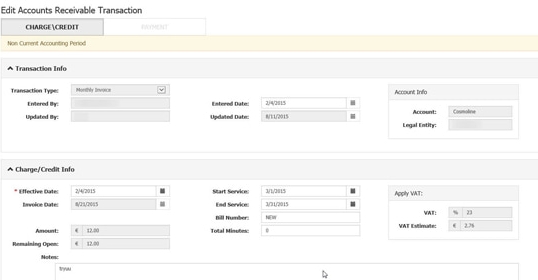Executives charged with modernization, innovation, or cost control implement the leading FaaS platforms to stay competitive. The global serverless computing market is forecast to grow, driven by digital transformation pressures in large US enterprises. The serverless adoption on Azure also grows.
Benefits of Azure Functions
With Azure Functions, enterprises offload operational burden to Azure or outsource infrastructure management to Microsoft. There are no servers/VMs for operations teams to manage. No patching OS, configuring scale sets, or worrying about load balancer configuration. Fewer infrastructure management tasks mean smaller DevOps teams and free IT personnel.
Functions Platform-as-a-Service integrates easily with other Azure services - it is a prime candidate in any 2025 platform selection matrix. CTOs and VPs of Engineering see adopting Functions as aligned with transformation roadmaps and multi-cloud parity goals. They also view Functions on Azure Container Apps as a logical step in microservice re-platforming and modernization programs, because it enables lift-and-shift of container workloads into a serverless model.
Azure Functions now supports container-app co-location and user-defined concurrency - it fits modern reference architectures while controlling spend. The service offers pay-per-execution pricing and a 99.95% SLA on Flex Consumption. Many previous enterprise blockers - network isolation, unpredictable cold starts, scale ceilings - are now mitigated with the Flex Consumption SKU (faster cold starts, user-set concurrency, VNet-integrated "scale-to-zero").
Heads of Innovation pilot Functions for business-process automation and novel services, since MySQL change-data triggers, Durable orchestrations, and browser-based Visual Studio Code enable quick prototyping of automation and new products. Functions enables rapid feature rollout through code-only deployment and auto-scaling, and new OpenAI bindings shorten minimum viable product cycles for artificial intelligence, so Directors of Product see it as a lever for faster time-to-market and differentiation.
Functions now supports streaming HTTP, common programming languages like .NET, Node, and Python, and browser-based development through Visual Studio Code, so team onboarding is low-friction.
Belitsoft applies deep Azure and .NET development expertise to design serverless solutions that scale with your business. Our Azure Functions developers architect systems that reduce operational overhead, speed up delivery, and integrate seamlessly across your cloud stack.
Future of Azure Functions
Azure Functions will remain a cornerstone of cloud-native application design. It follows Microsoft's cloud strategy of serverless and event-driven computing and aligns with containers/Kubernetes and AI trends. New features will likely be backward-compatible, protecting investments in serverless architecture. Azure Functions will continue integrating with other Azure services. .NET functions are transitioning to the isolated worker model, decoupling function code from host .NET versions - by 2026, the older in-process model will be phased out.
What is Azure Functions
Azure Functions is a fully managed serverless service - developers don’t have to deploy or maintain servers. Microsoft handles the underlying servers, applies operating-system and runtime patches, and provides automatic scaling for every Function App.
Azure Functions scales out and in automatically in response to incoming events - no autoscale rules are required.
On Consumption and Flex Consumption plans you pay only when functions are executing - idle time isn’t billed.
The programming model is event-driven, using triggers and bindings to run code when events occur.
Function executions are intended to be short-lived (default 5-minute timeout, maximum 10 minutes on the Consumption plan).
Microsoft guidance is to keep functions stateless and persist any required state externally - for example with Durable Functions entities.
The App Service platform automatically applies OS and runtime security patches, so Function Apps receive updates without manual effort.
Azure Functions includes built-in triggers and bindings for services such as Azure Storage, Event Hubs, and Cosmos DB, eliminating most custom integration code.
Azure Functions Core Architecture Components
Each Azure Function has exactly one trigger, making it an independent unit of execution.
Triggers insulate the function from concrete event sources (HTTP requests, queue messages, blob events, and more), so the function code stays free of hard-wired integrations.
Bindings give a declarative way to read from or write to external services, eliminating boiler-plate connection code.
Several functions are packaged inside a Function App, which supplies the shared execution context and runtime settings for every function it hosts.
Azure Function Apps run on the Azure App Service platform. The platform can scale Function Apps out and in automatically based on workload demand (for example, in Consumption, Flex Consumption, and Premium plans).
Azure Functions offers three core hosting plans - Consumption, Premium, and Dedicated (App Service) - each representing a distinct scaling model and resource envelope. Because those plans diverge in limits (CPU/memory, timeout, scale-out rules), they deliver different performance characteristics.
Function Apps can use enterprise-grade platform features - including Managed Identity, built-in Application Insights monitoring, and Virtual Network Integration - for security and observability.
The runtime natively supports multiple languages (C#, JavaScript/TypeScript, Python, Java, PowerShell, and others), letting each function be written in the team’s preferred stack.
Advanced Architecture Patterns
Orchestrator functions can call other functions in sequence or in parallel, providing a code-first workflow engine on top of the Azure Functions runtime.
Durable Functions is an extension of Azure Functions that enables stateful function orchestration. It lets you build long-running, stateful workflows by chaining functions together. Because Durable Functions keeps state between invocations, architects can create more-sophisticated serverless solutions that avoid the traditional stateless limitation of FaaS.
The stateful workflow model is well suited to modeling complex business processes as composable serverless workflows. It adds reliability and fault tolerance. As of 2025, Durable Functions supports high-scale orchestrations, thanks to the new durable-task-scheduler backend that delivers the highest throughput. Durable Functions now offers multiple managed and BYO storage back-ends (Azure Storage, Netherite, MSSQL, and the new durable-task-scheduler), giving architects new options for performance.
Azure Logic Apps and Azure Functions have been converging. Because Logic Apps Standard is literally hosted inside the Azure Functions v4 runtime, every benefit for Durable Functions (stateful orchestration, high-scale back-ends, resilience, simplified ops) now spans both the code-first and low-code sides of Azure’s workflow stack. Architects can mix Durable Functions and Logic Apps on the same CI/CD pipeline, and debug both locally with one tooling stack. They can put orchestrator functions, activity functions, and Logic App workflows into a single repo and deploy them together. They can also run Durable Functions and Logic Apps together in the same resource group, share a storage account, deploy from the same repo, and wire them up through HTTP or Service Bus (a budget for two plans or an ASE is required).
Azure Functions Hosting Models and Scalability Options
Azure Functions offers five hosting models - Consumption, Premium, Dedicated, Flex Consumption, and container-based (Azure Container Apps).
The Consumption plan is billed strictly “per-execution”, based on per-second resource consumption and number of executions. This plan can scale down to zero when the function app is idle. Microsoft documentation recommends the Consumption plan for irregular or unpredictable workloads.
The Premium plan provides always-ready (pre-warmed) instances that eliminate cold starts. It auto-scales on demand while avoiding cold-start latency.
In a Dedicated (App Service) plan the Functions host “can run continuously on a prescribed number of instances”, giving fixed compute capacity. The plan is recommended when you need fully predictable billing and manual scaling control.
The Flex Consumption plan (GA 2025) lets you choose from multiple fixed instance-memory sizes (currently 2 GB and 4 GB).
Hybrid & multi-cloud
Function apps can be built and deployed as containers and run natively inside Azure Container Apps, which supplies a fully-managed, KEDA-backed, Kubernetes-based environment.
Kubernetes-based hosting
The Azure Functions runtime is packaged as a Docker image that “can run anywhere,” letting you replicate serverless capabilities in any Kubernetes cluster. AKS virtual nodes are explicitly supported.
KEDA is the built-in scale controller for Functions on Kubernetes, enabling scale-to-zero and event-based scale out.
Hybrid & multi-cloud hosting with Azure Arc
Function apps (code or container) can be deployed to Arc-connected clusters, giving you the same Functions experience on-premises, at the edge, or in other clouds.
Arc lets you attach Kubernetes clusters “running anywhere” and manage & configure them from Azure, unifying governance and operations. Arc supports clusters on other public clouds as well as on-premises data centers, broadening where Functions can run.
Consistent runtime everywhere
Because the same open-source Azure Functions runtime container is used across Container Apps, AKS/other Kubernetes clusters, and Arc-enabled environments, the execution model, triggers, and bindings remain identical no matter where the workload is placed.
Azure Functions Enterprise Integration Capabilities
Azure Functions runs code without you provisioning or managing servers. It is event-driven and offers triggers and bindings that connect your code to other Azure or external services. It can be triggered by Azure Event Grid events, by Azure Service Bus queue or topic messages, or invoked directly over HTTP via the HTTP trigger, enabling API-style workloads.
Azure Functions is one of the core services in Azure Integration Services, alongside Logic Apps, API Management, Service Bus, and Event Grid. Within that suite, Logic Apps provides high-level workflow orchestration, while Azure Functions provides event-driven, code-based compute for fine-grained tasks.
Azure Functions integrates natively with Azure API Management so that HTTP-triggered functions can be exposed as managed REST APIs. API Management includes built-in features for securing APIs with authentication and authorization, such as OAuth 2.0 and JWT validation. It also supports request throttling and rate limiting through the rate-limit policy, and supports formal API versioning, letting you publish multiple versions side-by-side. API Management is designed to securely publish your APIs for internal and external developers.
Azure Functions scales automatically - instances are added or removed based on incoming events.
Azure Functions Security
Infrastructure hardening
Azure App Service - the platform that hosts Azure Functions - actively secures and hardens its virtual machines, storage, network connections, web frameworks, and other components.
VM instances and runtime software that run your function apps are regularly updated to address newly discovered vulnerabilities.
Each customer’s app resources are isolated from those of other tenants.
Identity & authentication
Azure Functions can authenticate users and callers with Microsoft Entra ID (formerly Azure AD) through the built-in App Service Authentication feature. The Functions can also be configured to use any standards-compliant OpenID Connect (OIDC) identity provider.
Network isolation
Function apps can integrate with an Azure Virtual Network. Outbound traffic is routed through the VNet, giving the app private access to protected resources.
Private Endpoint support lets function apps on Flex Consumption, Elastic Premium, or Dedicated (App Service) plans expose their service on a private IP inside the VNet, keeping all traffic on the corporate network.
Credential management
Managed identities are available for Azure Functions; the platform manages the identity so you don’t need to store secrets or rotate credentials.
Transport-layer protection
You can require HTTPS for all public endpoints. Azure documentation recommends redirecting HTTP traffic to HTTPS to ensure SSL/TLS encryption.
App Service (and therefore Azure Functions) supports TLS 1.0 – 1.3, with the default minimum set to TLS 1.2 and an option to configure a stricter minimum version.
Security monitoring
Microsoft Defender for Cloud integrates directly with Azure Functions and provides vulnerability assessments and security recommendations from the portal.
Environment separation
Deployment slots allow a single function app to run multiple isolated instances (for example dev, test, staging, production), each exposed at its own endpoint and swappable without downtime.
Strict single-tenant / multi-tenant isolation
Running Azure Functions inside an App Service Environment (ASE) places them in a fully isolated, dedicated environment with the compute that is not shared with other customers - meeting high-sensitivity or regulatory isolation requirements.
Azure Functions Monitoring
Azure Monitor exposes metrics both at the Function-App level and at the individual-function level (for example Function Execution Count and Function Execution Units), enabling fine-grained observability.
Built-in observability
Native hook-up to Azure Monitor & Application Insights – every new Function App can emit metrics, logs, traces and basic health status without any extra code or agents.
Data-driven architecture decisions
Rich telemetry (performance, memory, failures) – Application Insights automatically captures CPU & memory counters, request durations and exception details that architects can query to guide sizing and design changes.
Runtime topology & trace analysis
Application Map plus distributed tracing render every function-to-function or dependency call, flagging latency or error hot-spots so that inefficient integrations are easy to see.
Enterprise-wide data export
Diagnostic settings let you stream Function telemetry to Log Analytics workspaces or Event Hubs, standardising monitoring across many environments and aiding compliance reporting.
Infrastructure-as-Code & DevOps integration
Alert and monitoring rules can be authored in ARM/Bicep/Terraform templates and deployed through CI/CD pipelines, so observability is version-controlled alongside the function code.
Incident management & self-healing
Function-specific "Diagnose and solve problems" detectors surface automated diagnostic insights, while Azure Monitor action groups can invoke runbooks, Logic Apps or other Functions to remediate recurring issues with no human intervention.
Hybrid / multi-cloud interoperability
OpenTelemetry preview lets a Function App export the very same traces and logs to any OTLP-compatible endpoint as well as (or instead of) Application Insights, giving ops teams a unified view across heterogeneous platforms.
Cost-optimisation insights
Fine-grained metrics such as FunctionExecutionCount and FunctionExecutionUnits (GB-seconds = memory × duration) identify high-cost executions or over-provisioned plans and feed charge-back dashboards.
Real-time storytelling tools
Application Map and the Live Metrics Stream provide live, clickable visualisations that non-technical stakeholders can grasp instantly, replacing static diagrams during reviews or incident calls.
Kusto log queries across durations, error rates, exceptions and custom metrics to allow architects prove performance, reliability and scalability targets.
Azure Functions Performance and Scalability
Scaling capacity
Azure Functions automatically add or remove host instances according to the volume of trigger events. A single Windows-based Consumption-plan function app can fan out to 200 instances by default (100 on Linux). Quota increases are possible. You can file an Azure support request to raise these instance-count limits.
Cold-start behaviour & mitigation
Because Consumption apps scale to zero when idle, the first request after idleness incurs extra startup latency (a cold start).
Premium plan keeps instances warm. Every Premium (Elastic Premium) plan keeps at least one instance running and supports pre-warmed instances, effectively eliminating cold starts.
Scaling models & concurrency control
Functions also support target-based scaling, which can add up to four instances per decision cycle instead of the older one-at-a-time approach. Premium plans let you set minimum/maximum instance counts and tune per-instance concurrency limits in host.json.
Regional characteristics
Quotas are scoped per region. For example, Flex Consumption imposes a 512 GB regional memory quota, and Linux Consumption apps have a 500-instance-per-subscription-per-hour regional cap.
Apps can be moved or duplicated across regions. Microsoft supplies guidance for relocating a Function App to another Azure region and for cross-region recovery.
Downstream-system protection
Rapid scale-out can overwhelm dependencies. Microsoft’s performance guidance warns that Functions can generate throughput faster than back-end services can absorb and recommends applying throttling or other back-pressure techniques.
Configuration impact on cost & performance
Plan selection and tuning directly affect both. Choice of hosting plan, instance limits and concurrency settings determine a Function App’s cold-start profile, throughput and monthly cost.
How Belitsoft Can Help
Our serverless developers modernize legacy .NET apps into stateless, scalable Azure Functions and Azure Container Apps. The team builds modular, event-driven services that offload operational grunt work to Azure. You get faster delivery, reduced overhead, and architectures that belong in this decade. Also, we do CI/CD so your devs can stop manually clicking deploy.
We ship full-stack teams fluent in .NET, Python, Node.js, and caffeine - plus SignalR developers experienced in integrating live messaging into serverless apps. Whether it's chat, live dashboards, or notifications, we help you deliver instant, event-driven experiences using Azure SignalR Service with Azure Functions. Our teams prototype serverless AI with OpenAI bindings, Durable Functions, and browser-based VS Code so you can push MVPs like you're on a startup deadline. You get your business processes automated so your workflows don’t depend on somebody's manual actions.
Belitsoft’s .NET engineers containerize .NET Functions for Kubernetes and deploy across AKS, Container Apps, and Arc. They can scale with KEDA, trace with OpenTelemetry, and keep your architectures portable and governable. Think: event-driven, multi-cloud, DevSecOps dreams - but with fewer migraines.
We build secure-by-design Azure Functions with VNet, Private Endpoints, and ASE. Our .NET developers do identity federation, TLS enforcement, and integrate Azure Monitor + Defender. Everything sensitive is locked in Key Vault.
Our experts fine-tune hosting plans (Consumption, Premium, Flex) for cost and performance sweet spots and set up full observability pipelines with Azure Monitor, OpenTelemetry, and Logic Apps for auto-remediation.
Belitsoft helps you build secure, scalable solutions that meet real-world demands - across industries and use cases. We offer future-ready architecture for your needs - from cloud migration to real-time messaging and AI integration. Consult our experts.
Recommended posts
Portfolio
Our Clients' Feedback


















.png)
![.NET Development Tools and Technologies [2025 Trends]](/uploads/images/blogposts/net-development-services/tools/dotnet_ecosystem-image(600x250-crop).png)
.png)
.jpg)
.jpg)
.jpg)
.jpg)
.jpg)
.jpg)
.jpg)
.jpg)
.jpg)
.jpg)
.jpg)
.jpg)
.jpg)
.jpg)
.jpg)
.jpg)
.jpg)
.jpg)
























We have been working for over 10 years and they have become our long-term technology partner. Any software development, programming, or design needs we have had, Belitsoft company has always been able to handle this for us.
Founder from ZensAI (Microsoft)/ formerly Elearningforce